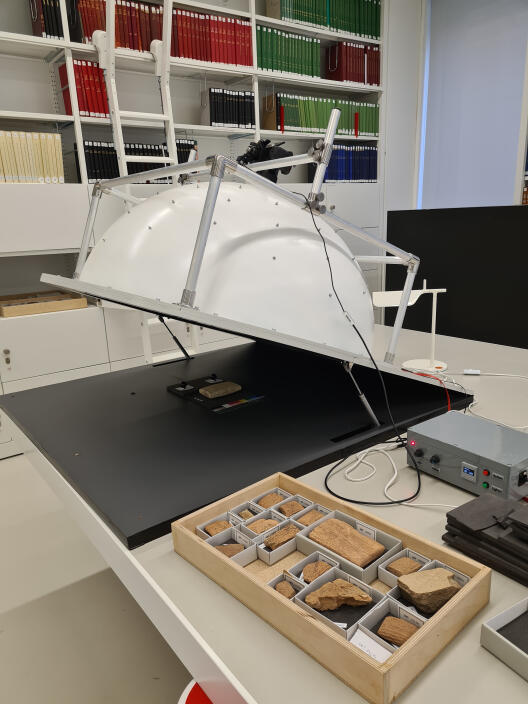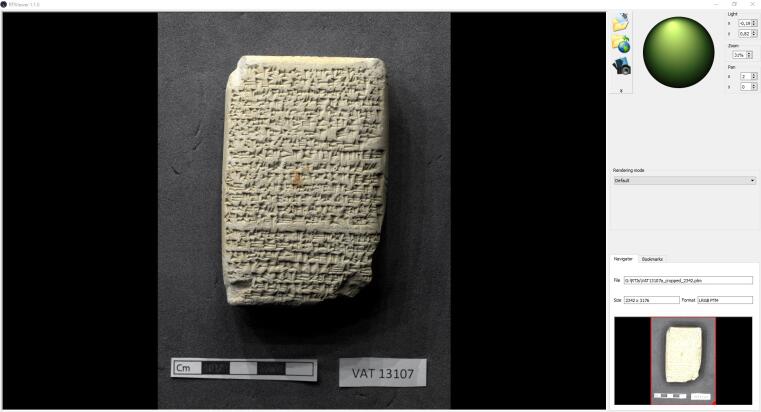The RTI dome

RTI stands for "Reflectance Transformation Imaging." This is a computer-assisted type of photography which allows for viewing the recorded objects with variable lighting. The lighting can be adjusted interactively to every direction needed. Aside from recording the shape and colour of the object in question, these parameters can also be enhanced to show characteristics of an artefact which may not be visible to the naked eye.
The process of photographing takes place within a dome that contains 64 LED-lights. These are activated one after the other, and a high-resolution photograph is taken with each light before it turns off and the next light turns on. This leaves us with photographs of an object in 64 different light settings. These images are then combined into one depiction of the tablet, thereby allowing the interactive changes in lighting. When used for cuneiform tablets, all preserved sides of the tablet need to be recorded, leading to up to six RTI-images per tablet. The results allow for working with the texts without actually being present at the museum.

There is one downside when dealing with RTI imaging for tablets, namely, that the photographs work with flat surfaces of each side of the tablet. This can lead to difficulties because tablets are three-dimensional and in many cases, scribes wrote their information over the edges of the tablet. This is why GoviB relies not only on RTI imaging, but also on 3D scanning of tablets. Both types of data will be openly available online once GoviB's editorial work on the texts is published.
